What is a gimbal, and how do you use one?
If you’re serious about filming, you’ve probably heard of camera stabilizers. But should you choose a gimbal, how do you use it, and is Steadicam or bodycam better?

If you’re serious about filming, you’ve probably heard of camera stabilizers. But should you choose a gimbal, how do you use it, and is Steadicam or bodycam better?
Check out our video with Epidemic Sound ambassador Zdenka Darula below, then keep reading for our full rundown.
We'll cover:
- What is a gimbal?
- How does a gimbal work?
- What is a 3-axis gimbal?
- Is it worth getting a gimbal?
- How to use a gimbal
- Should you get a bodycam instead of a gimbal?
- Should you get a Steadicam instead of a gimbal?
- What are the cons of using a gimbal?
What is a gimbal?
When you film something on your phone or with a handheld camera, it’s usually a bit shaky. A gimbal uses sensors and motors to stabilize and support your camera, doing what a tripod usually would if you were staying in one location or taking a photo.
It looks a bit like a selfie stick, with a host of controls on the handle so you can pan, tilt, and control your shots on everything from DSLR cameras to GoPros, cinema cameras to smartphones.
How does a gimbal work?
The gimbal senses the difference between your intentional movements and small, unwanted interruptions like shakiness.
Silent, brushless motors inside the gimbal make sure all this happens, giving you a result that looks super professional – the stabilizing motors are the same you get in drones.
This is why professional content creators invest in gimbals. They’re much cheaper than ‘proper,’ Hollywood alternatives like dollies or Steadicams, and they produce great results. Using a gimbal cuts out the need for a dedicated camera operator while still delivering stable, high-quality footage.
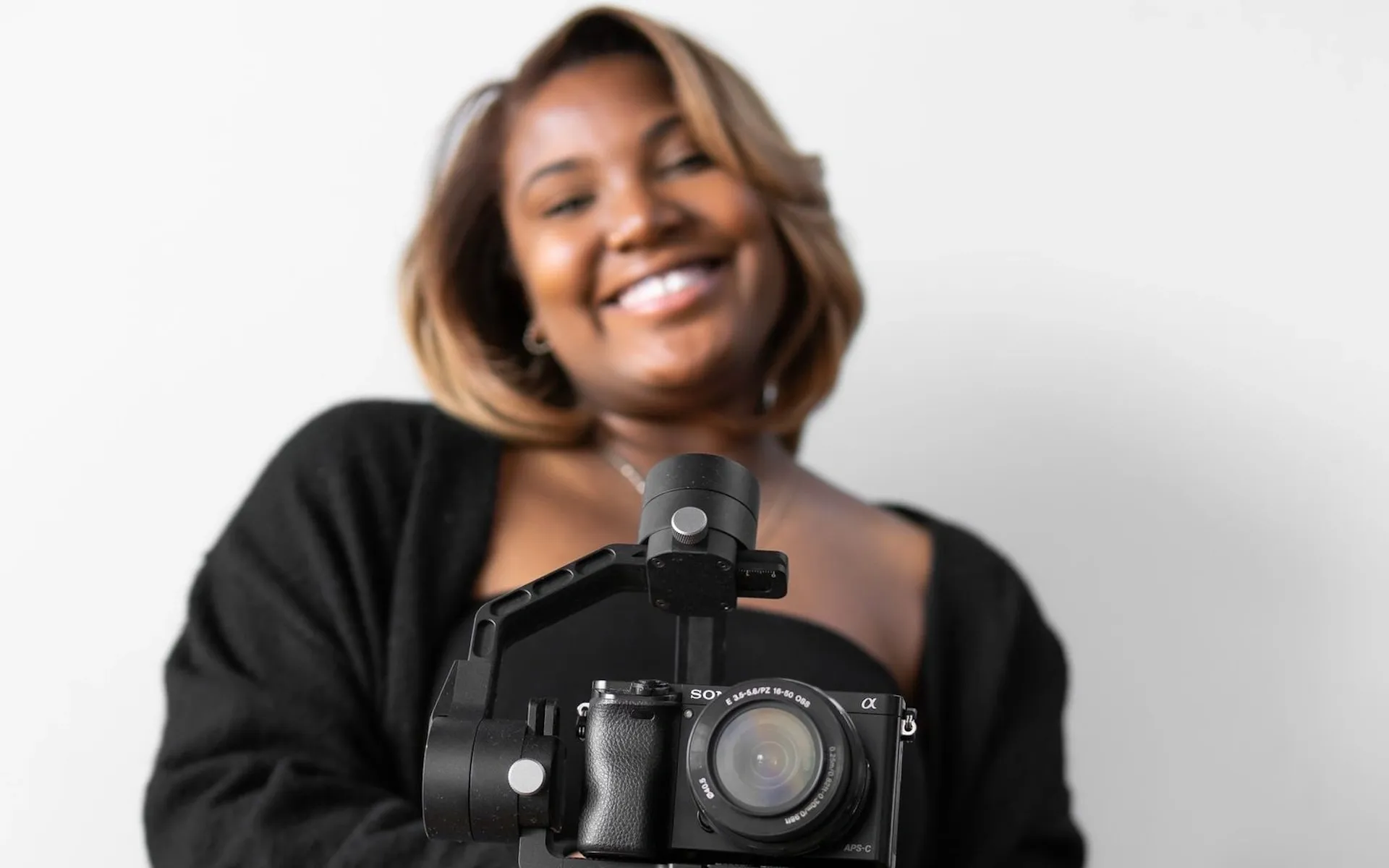
What is a 3-axis gimbal?
Let’s dig into the mechanisms behind the gimbal: namely, the 3-axis system that makes the whole thing tick. If you hear someone talking about a ‘3-axis gimbal,’ then don’t worry. That’s just another name for everyday gimbals.
The gimbal stabilizes your footage by sending movement data to its motors and sensors via ‘internal measurement units’ (IMUs). This acts a little like your brain sending messages to your body – the computing equipment in the gimbal can calculate how much movement is needed to counteract the shake on a dime.
When it detects movement on one of its three axes, it creates an equal amount of movement on the other end to balance everything out. It can also figure out if a movement was intentional. For example, the gimbal won’t try and smooth out an obvious tilt.
The 3 axes refer to the different ways in which the camera can move. Check them out below:
Tilt
This means up and down. It’s sometimes called the ‘pitch’ axis. You’d use this to track a subject moving up or down, such as walking up some stairs or jumping on a trampoline.
Pan
This refers to the camera moving side to side, most often left to right. It’s sometimes called the ‘yaw’ axis, and can be found underneath the camera. You’d use this to track a subject traveling from one place to another, like someone riding a bicycle or walking down the street.
Roll
The roll axis moves horizontally, usually to capture a subject that’s moving around within the shot. It helps maintain focus when the subject’s being pesky and not staying in one spot, or not moving in a linear fashion.
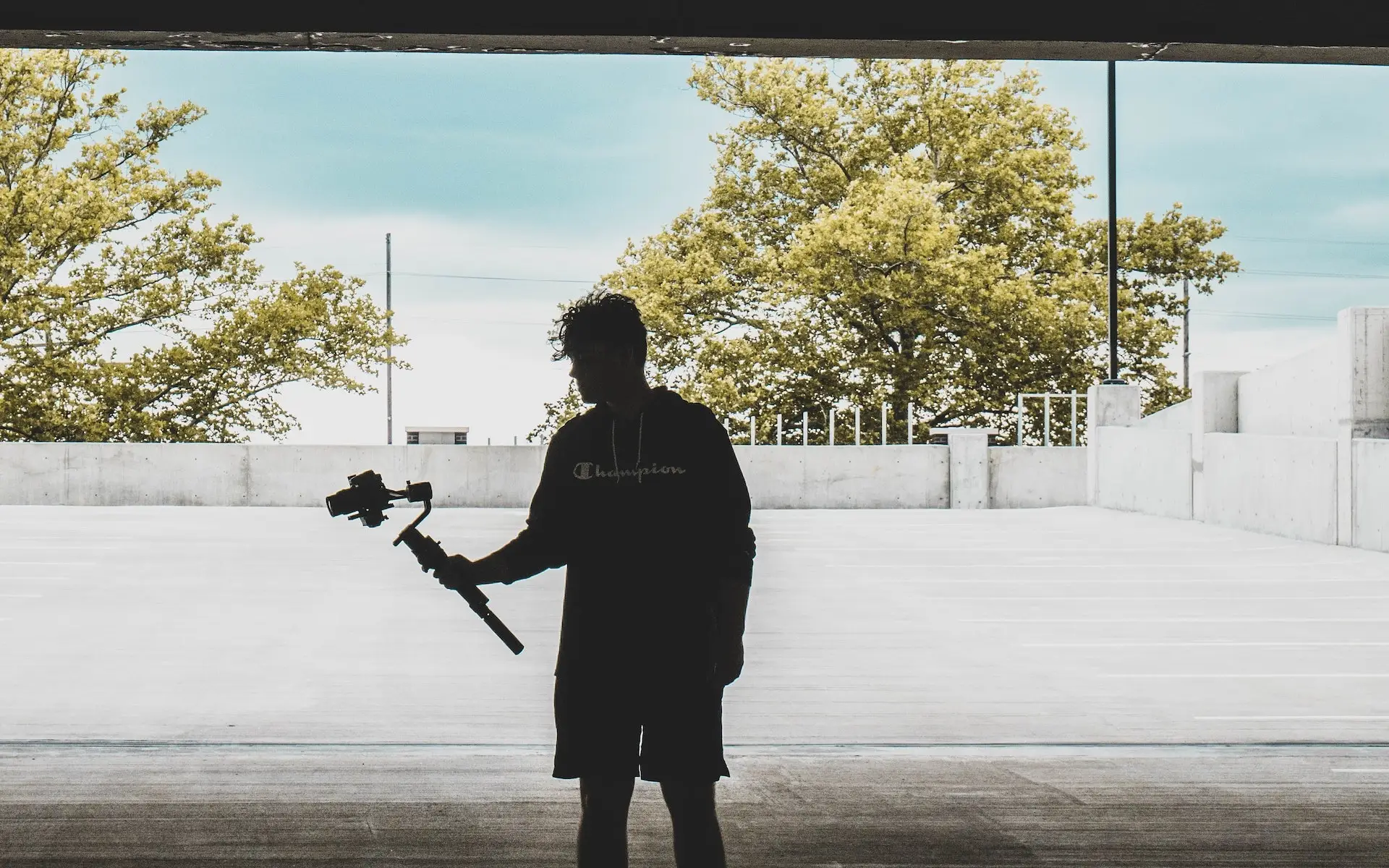
Is it worth getting a gimbal?
As with all camera equipment, gimbals aren’t cheap. Unless you want your content to look like it came straight from The Blair Witch Project, you’ll need to spend a bit. Depending on what camera you’re using, a starter gimbal can cost anything from $100 to $1,000. For example:
Zhiyun Smooth 4
An iPhone-optimized gimbal, which lands at the lower price bracket of $99. It comes with amassive amount of buttons and preset shooting modes, which can be a bit exhausting for a beginner. But, it does come with a detailed tutorial video and app, so once you get your head around it, it’s the perfect starter gimbal. Check it out here.
DJI RSC 2
A foldable, versatile gimbal that’s compatible with a host of DSLR cameras, the DJI RSC 2 will set you back $499. It features a technology called ActiveTrack 3.0, which uses the source signal from your camera (someone playing basketball or a dog running around, for example) to track the subject automatically. You can read more about the DJI RSC 2 here.
ZhiYun Weebill 2
A flashy, all-out gimbal that justifies its $1,099 price tag. It’s compatible with a slew of Canon and Sony cameras, features an integrated 2.88″ flip-out touchscreen, and is a genuinely heavyweight piece of kit with more features than you can shake a stick – or another gimbal – at. Learn more about it here.
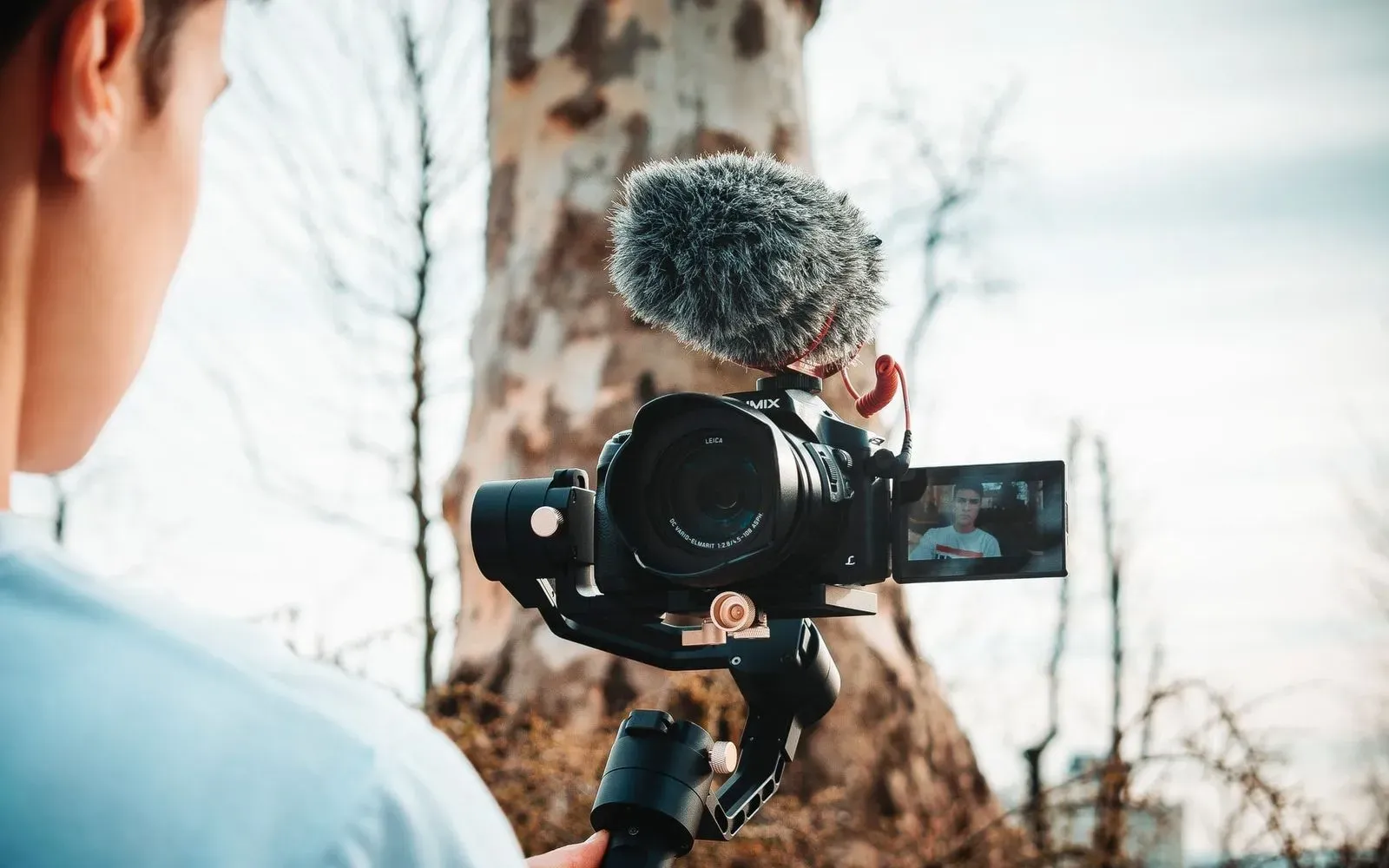
How to use a gimbal
Anyone who’s used a selfie stick will find gimbal operation familiar. The key is to fix and balance your camera before turning your gimbal on, to avoid any vibration or shaking once you start filming. Also, check how long your gimbal’s battery lasts, and make sure it’s fully charged before the shoot. There’s nothing worse than a gimbal going to sleep just as you’re in the middle of a perfect shot!
Gimbals can be used to achieve scenes worthy of big-budget movie studios. Here are a few:
Tracking shot
The old reliable. Circle your subject to achieve the ultimate tracking shot, or follow them as they’re in the center of the frame. The gimbal gives you the freedom to follow your subject fluidly and without shakiness.
Crane shot
This is a simple way to alter perspective, and go from low to high in a short space of time. You can achieve this by getting on your knees, focusing your gimbal on the subject, then gradually lifting yourself up.
Drone shot
For an alternative drone shot, walk toward an edge, push forward, then reach out with the gimbal, revealing a suitably epic expanse underneath you. Obviously, be careful, and make sure it’s safe before you get near any ledges!
Pull back
There's one instruction to follow here: walk backward! Make sure to keep the path clear, but once you nail this, it’s perfect for injecting drama into scene finales, or even if you want to get a bit creative with your transitions.
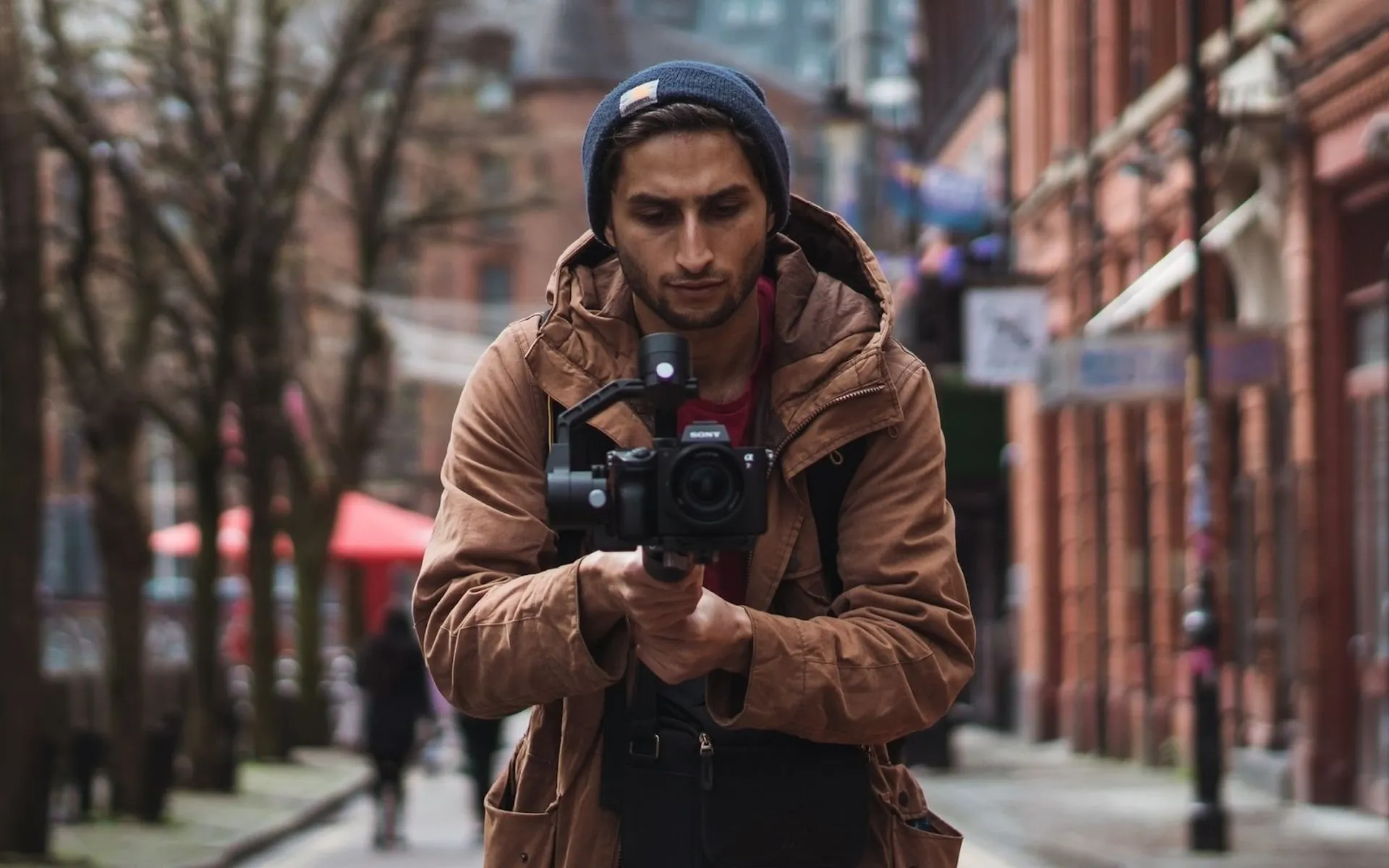
Dolly shot
Find something in the foreground, move your camera to the left or right, and keep focus on the background to add a ton of depth.
Fly through
This one's...strange. Find a gap like a window, bush, or cave –you’ve got caves, right? – that your camera and gimbal will fit through. From there, push your camera through the space, then carefully pull it back. You’ve got two shots here, which you can use independently, or together at once if you want to make something trippy.
Need music to soundtrack your awesome shots? We've got you covered.

Should you get a bodycam instead of a gimbal?
Another popular camera stabilizer is the bodycam, also known as a SnorriCam (its brilliant name comes from its inventors, Finnish filmmakers Einar and Eiður Snorri). It’s rigged to the subject’s body, so when they move, the camera stays focused on them in a point-of-view perspective – it’s their surroundings that move.
It looks incredible, and is ideal for personal shots where you want to feel like you’re in the subject’s shoes. This is why it’s often used in chase scenes, party scenes, and scenes where characters are shaken up or confused.
But if you want diversity in your shots, a bodycam isn’t right for your content. It’s still a worthy addition to your arsenal if your budget allows, though!
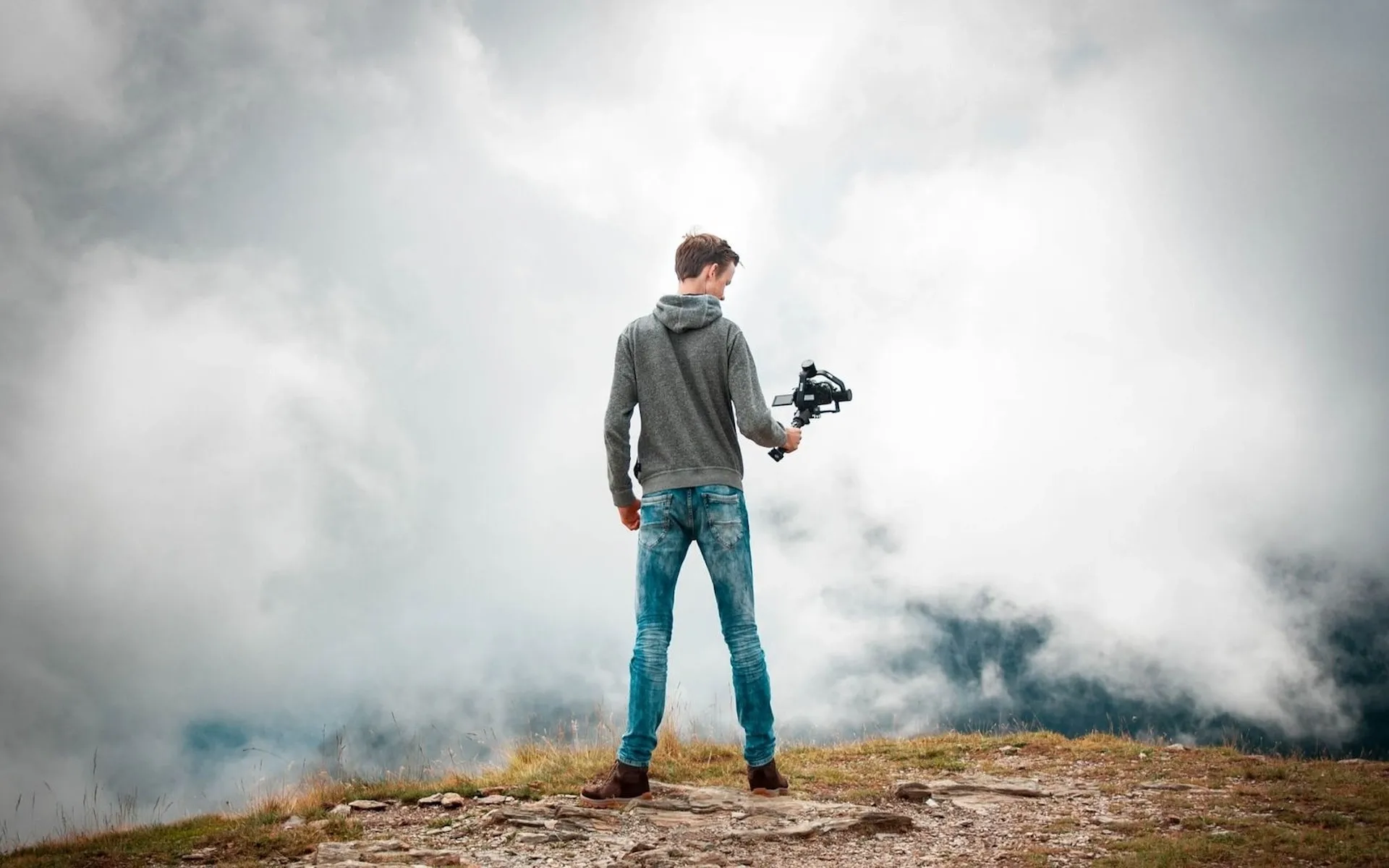
Should you get a Steadicam instead of a gimbal?
The Steadicam is the OG handheld stabilizer – it’s been knocking around since the 1970s. It won an Oscar for Scientific or Technical Achievement in 1977, and as a result, it’s not changed much.
Steadicam vs. gimbal
It’s the cost and accessibility that edges gimbals over Steadicams for beginners. Gimbals come with a level of automatic functionality, whereas you need an expert to operate a Steadicam. After all, it’s a heavy-duty, fiddly piece of machinery.
Steadicams also cost a lot more than gimbals. We’re talking thousands of dollars. If you’re starting out, today’s gimbals offer a level of professionalism that you’ll only match after learning about Steadicams for years.
What are the cons of using a gimbal?
Gimbals are great, and while they’re a budget-friendly alternative to Steadicams, they do have a few drawbacks. Let’s have a look at those now:
- They need power. Double-check you have extra batteries or charging equipment if you’re shooting away from home.
- They need recalibrating for different cameras. It’s no trouble if you’re shooting with one camera, but using multiple cameras requires the gimbal to be readjusted each time.
- They’re not ideal ergonomically. Like playing video games for too long, using a gimbal for extended periods can cramp your arms and hands.
- They have a learning curve. Once you nail it, you’re good to go. However, gimbals aren’t just plug-and-play, so you’ll have to spend a time getting used to your new gear before you nail the shot.
Now that you know the basics about gimbals and how they stack up against other camera stabilizers, it’s time to soundtrack your content.
Our catalog is high-quality, affordable, and safe. An Epidemic Sound subscription goes beyond royalty-free music, removing the headache of licensing and freeing you up to do what you do best. You can enjoy the safety of our license hand-in-hand with our massive catalog of 50,000 tracks, covering just about every genre you can think of. You’ll also gain unlimited access to our advanced search functions — finding the right sound’s never been easier.
It’s better than royalty-free. It’s worry-free. Get started with Epidemic Sound below.

Are you a video editor or filmmaker? Whether you’re an absolute master or just a beginner, discover what Epidemic Sound has to offer on our Epidemic Sound for Filmmaking page. Oh, and if you’re looking for some music for video editing, check out our dedicated page.
Related posts:

